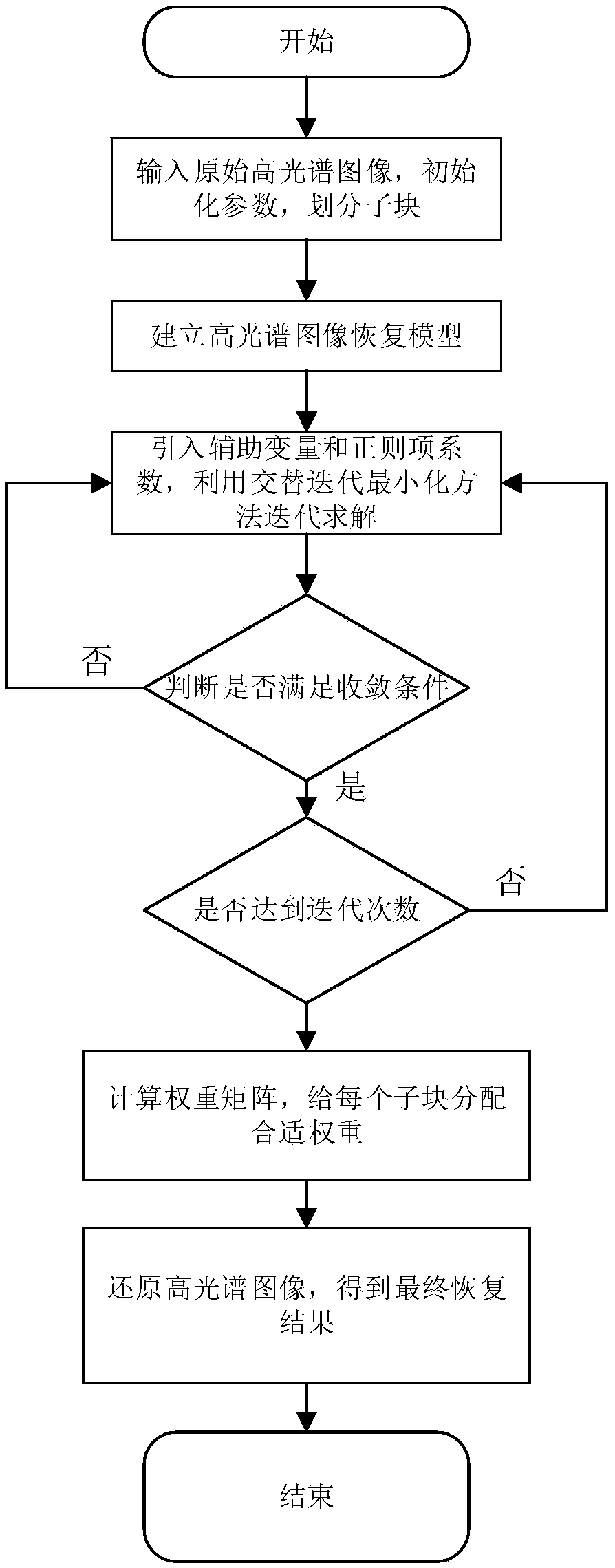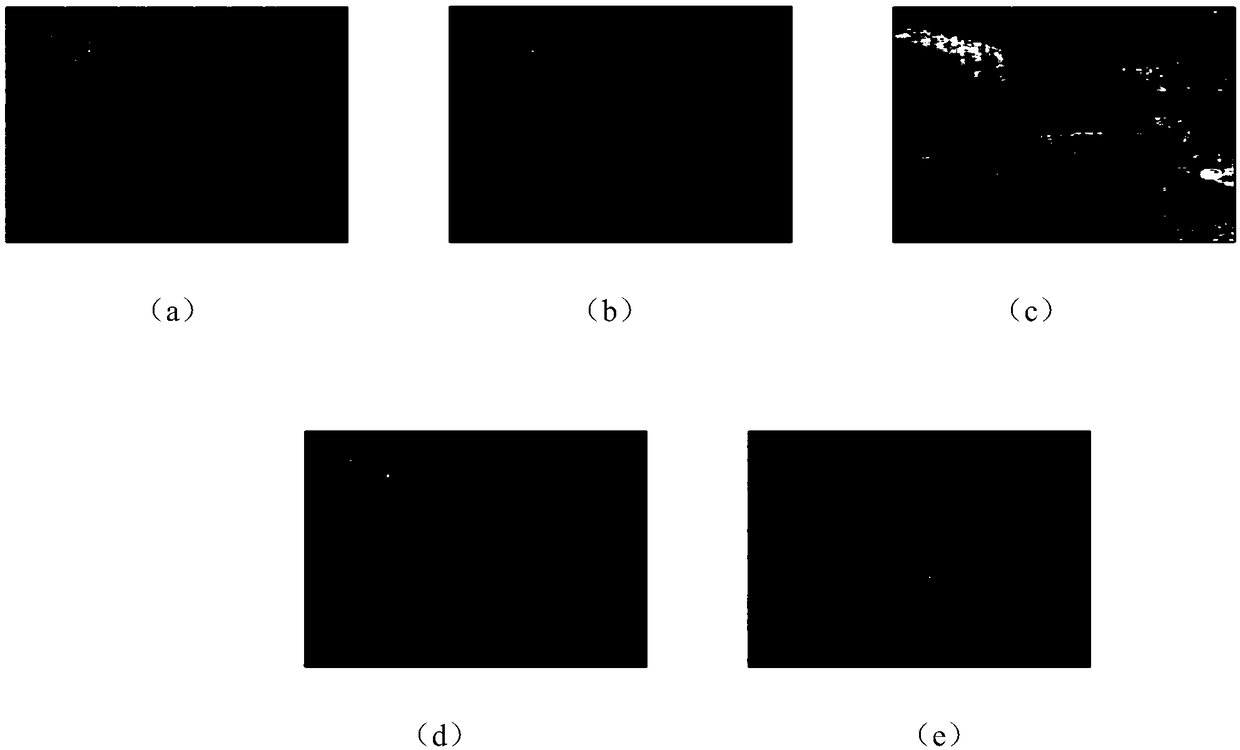A hyperspectral remote sensing image restoration method based on non-convex low rank sparse constraint
A technology of hyperspectral remote sensing and sparse constraint, applied in the field of hyperspectral remote sensing image restoration based on non-convex low-rank sparse constraint model, it can solve the problems of affecting the quality of image restoration and the convergence speed cannot meet the requirements, and achieves the preservation of image details and high accuracy. Image restoration quality, to achieve the effect of restoration
- Summary
- Abstract
- Description
- Claims
- Application Information
AI Technical Summary
Problems solved by technology
Method used
Image
Examples
example 1
[0095] Example 1: This example selects a typical dataset in the field of remote sensing——EO-1Hyperion Australia dataset. The size of the original image is 3858×256×242. Due to space limitations, after removing the overlapping bands in the range of visible light, near-infrared and short-wave infrared , select a size of 400×200×150, subtract the minimum pixel value from each pixel value, and then divide by the difference between the maximum and minimum pixel values to obtain the data normalized to [0, 1]. Use the method proposed by the present invention to carry out image recovery processing, and use the above-mentioned LRMR, LRTV, NAILRMA to carry out comparative experiments. Experimental results such as figure 2 shown, where figure 2 (a) is the original hyperspectral remote sensing image of the 52nd band, figure 2 (b) is the effect of the LRMR method, figure 2 (c) is the effect of LRTV method, figure 2 (d) is the effect of the NAILRMA method, figure 2 (e) is the e...
example 2
[0096] Example 2: This example selects a typical data set in the field of remote sensing—Hyperspectral Digital ImageryCollection Experiment (HYDICE) Washington DC Mall data set. The size of the original image is 1208×307×191. Due to space limitations, the selected image size is 256×256×11 . Same as Example 1, the original image data is normalized, and Gaussian noise with an average value of 25dB is randomly added to all bands artificially. Then use the method proposed by the present invention to restore and compare with other methods. Experimental results such as image 3 shown, where image 3 (a) is one of the clear hyperspectral remote sensing image data, image 3 (b) is the image after adding Gaussian noise and strip noise, image 3 (c) is the effect of LRMR method (SNR=10.8786dB, MSSIM=0.66377), image 3 (d) is the effect of LRTV method (SNR=10.6603dB, MSSIM=0.74259), image 3 (e) is the NAILRMA method effect (SNR=15.5521dB, MSSIM=0.83878), image 3 (f) is the effec...
PUM
 Login to View More
Login to View More Abstract
Description
Claims
Application Information
 Login to View More
Login to View More - R&D
- Intellectual Property
- Life Sciences
- Materials
- Tech Scout
- Unparalleled Data Quality
- Higher Quality Content
- 60% Fewer Hallucinations
Browse by: Latest US Patents, China's latest patents, Technical Efficacy Thesaurus, Application Domain, Technology Topic, Popular Technical Reports.
© 2025 PatSnap. All rights reserved.Legal|Privacy policy|Modern Slavery Act Transparency Statement|Sitemap|About US| Contact US: help@patsnap.com



